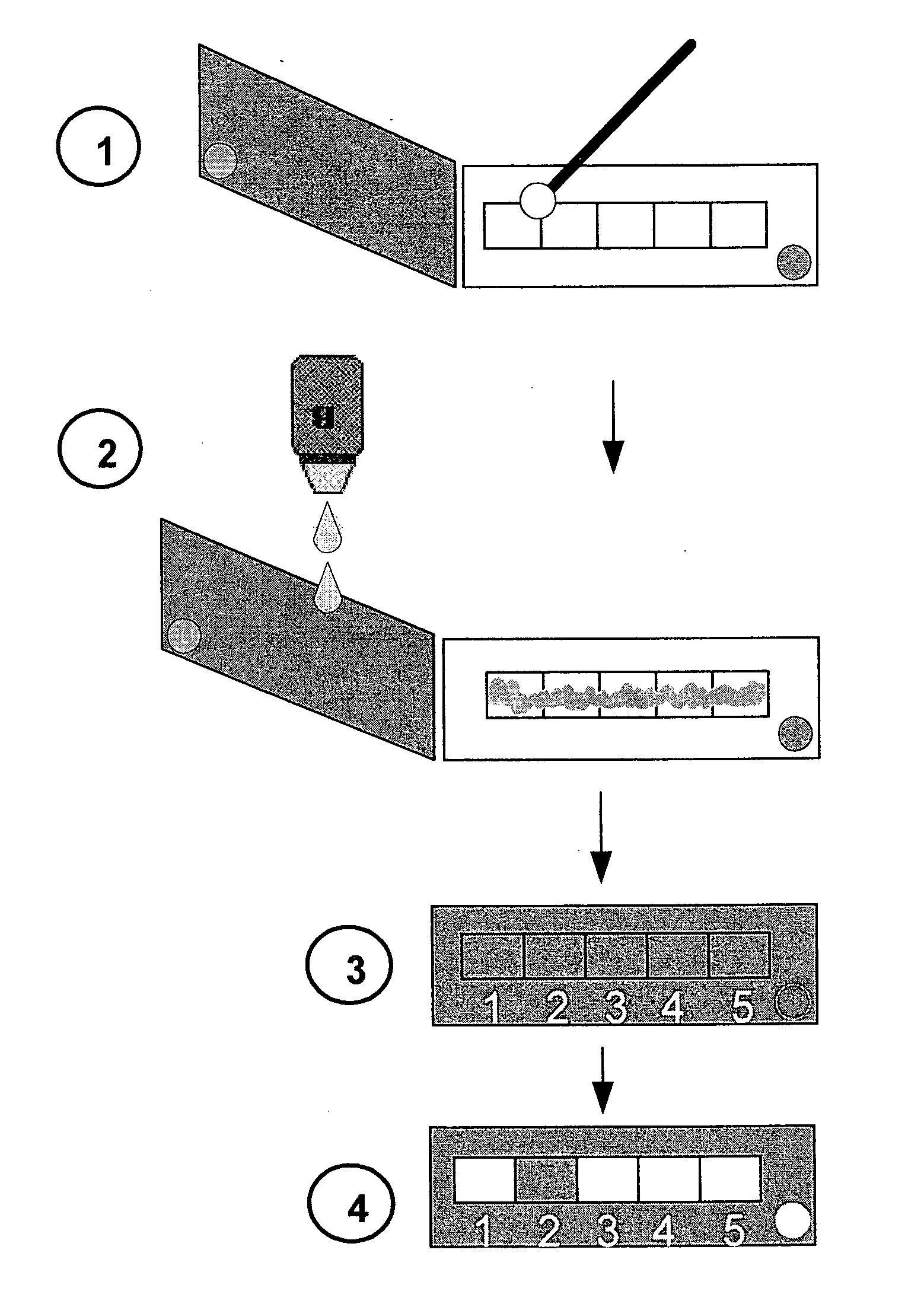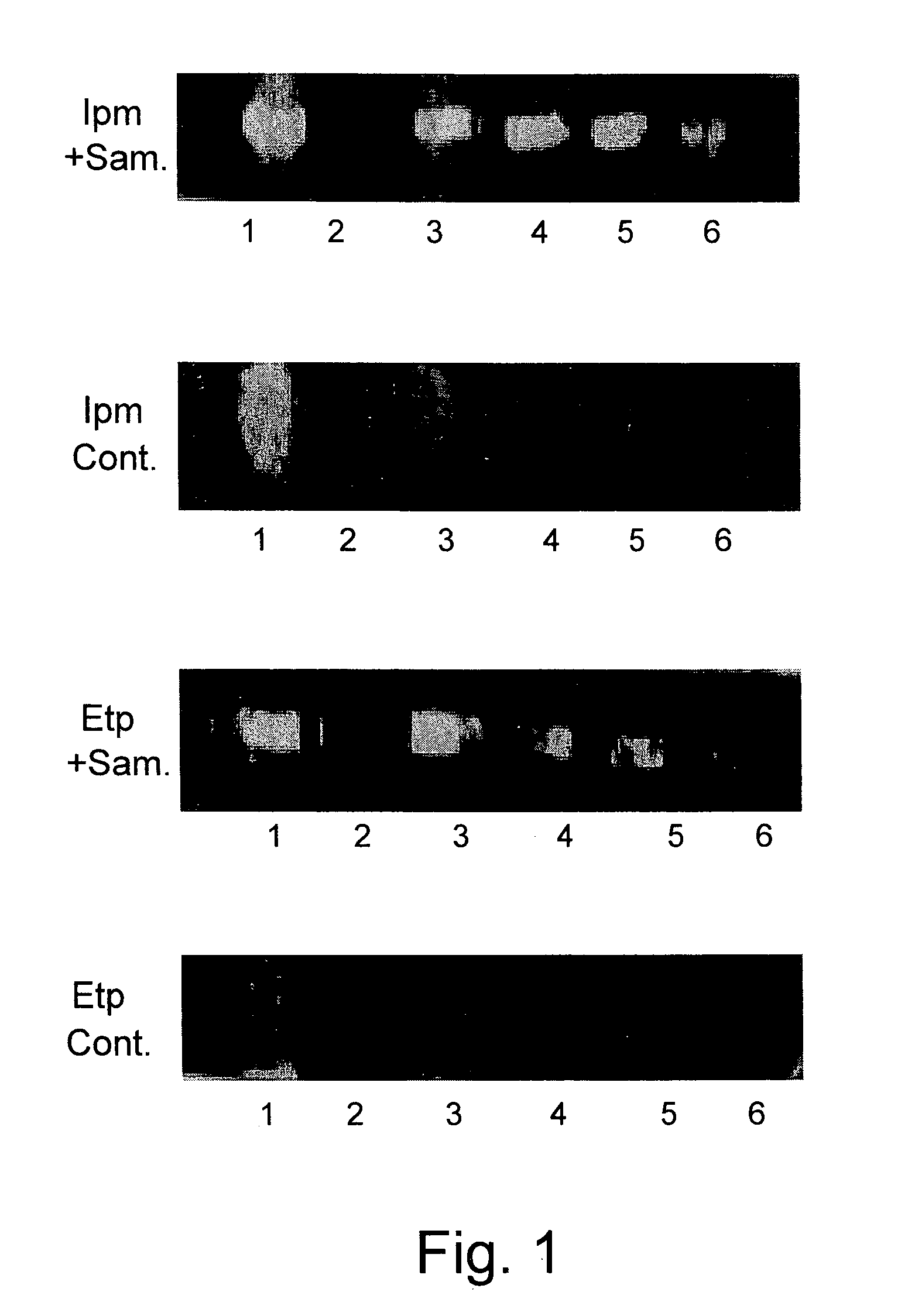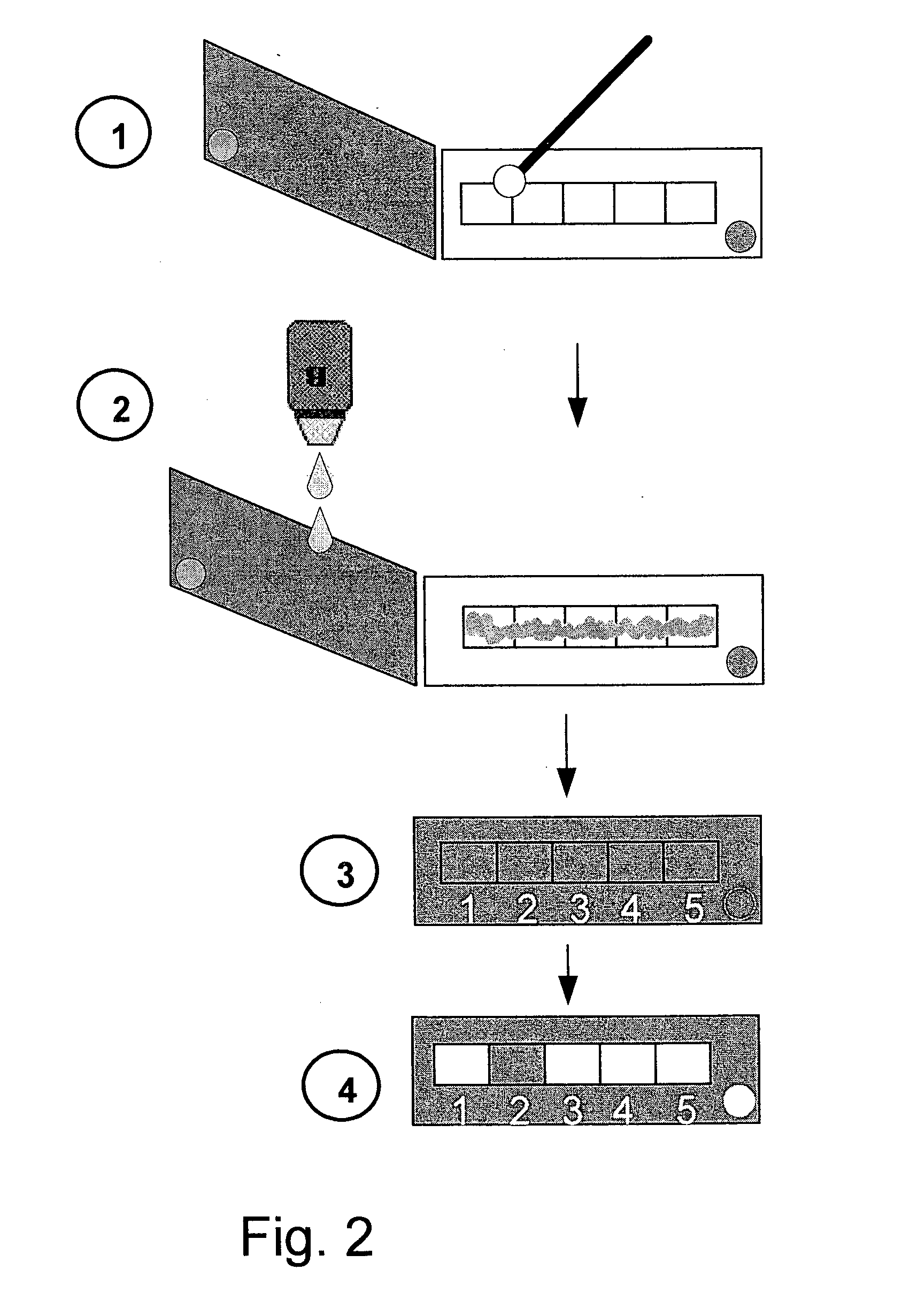Methods and Kits for Direct Detection and Susceptibility Profiling of Beta-Lactam Resistant Bacteria
a technology of beta-lactam and susceptibility profiling, which is applied in the field of methods and test kits for rapid and direct detection of resistant bacteria, can solve the problems of inability to reliably predict the in vivo effect and therefore the outcome of clinical therapy, failure to cure an infection with antibiotics, and current routine laboratory tests can be misleading, so as to achieve rapid and incubation-free detection
- Summary
- Abstract
- Description
- Claims
- Application Information
AI Technical Summary
Benefits of technology
Problems solved by technology
Method used
Image
Examples
example 1
Detection of Carbapenemase Activity in Clinical Samples
[0171]In order to optimize detection conditions for clinical samples containing beta-lactamase activity, two beta-lactam antibiotics of the carbapenem family, ertapenem [Ert] and imipenem [Ipm] were used as substrates for detection of carbapenemase activity in urine samples.
[0172]Urine samples were concentrated by a two minute centrifugation step at 3000 RPM and the resulting pellet was streaked on standard slides. A strip impregnated with Assay Reagent solution (iodine and starch) and divided into six test areas, each impregnated with a different amount of either Ert or Ipm, as presented in FIG. 1, was attached to a plain slide and placed on a streaked (upper) slide. An identical strip-on-slide was placed on an unstreaked (lower) slide. The respective strip-slide combinations remained in contact for 12 min at room temperature and then scanned for decolorization produced by carbapenem degradation products' uptake of iodine. A st...
example 2
Analysis of Antibiotic Resistance Using the Art of the Invention as Compared to the Conventional Laboratory Procedure (CLP)
[0173]In order to test the specificity and sensitivity of the test of the invention, clinical urine samples were analyzed using both the invention's method and conventional lab procedures, and the resulting beta-lactamase activity identifications compared.
[0174]One mL urine sample pellets were collected as described in Example 1 and each streaked on a slide. The strip of the invention (termed ART for Antibiotics Resistance Test) was used to test for beta-lactamase and its ability to degrade Ceftazidime [Caz], Ceftriaxone [Cro], Cefuroxime [Cxm] and Ampicillin [Amp]. The strip, containing iodine and starch and divided to areas containing each of the abovementioned antibiotics, and attached to a plain slide, was activated as shown above, and placed on the streaked slide. After 5-15 minutes at 33° C.-38° C. the slide was scanned and recorded.
[0175]The same specimen...
example 3
Modular Antibiotic Substrate Containing Susceptibility Testing Units as an Alternative to the ART Strip
[0178]A modular antibiotic resistance detection kit offers more flexibility in testing different resistance profiles. In the modular detection kit exemplified here, the ART strip is replaced by filter paper segments glued to a slide, each segment impregnated with a single antibiotic. An illustrative scheme of such modular kit is shown in FIG. 2.
[0179]Specifically, pathogen samples were tested using filter papers impregnated with the following beta-lactam antibiotics: ampicillin [Amp], augmentin (a combination of amoxicillin and clavulanic acid) [AMC], clavulanic acid (Reduced Resistance test) [RR], ceftazidime [Caz] and either imipenem or meropenem [CPM]. The impregnation details of the fragments were as in the previous Examples.
[0180]Filter paper (Whatman no. 3] strips impregnated with Assay Reagent solution were used as “indicator strips”. An indicator strip was attached to the p...
PUM
| Property | Measurement | Unit |
|---|---|---|
| molecular weight | aaaaa | aaaaa |
| molecular weights | aaaaa | aaaaa |
| temperature | aaaaa | aaaaa |
Abstract
Description
Claims
Application Information
 Login to View More
Login to View More - R&D
- Intellectual Property
- Life Sciences
- Materials
- Tech Scout
- Unparalleled Data Quality
- Higher Quality Content
- 60% Fewer Hallucinations
Browse by: Latest US Patents, China's latest patents, Technical Efficacy Thesaurus, Application Domain, Technology Topic, Popular Technical Reports.
© 2025 PatSnap. All rights reserved.Legal|Privacy policy|Modern Slavery Act Transparency Statement|Sitemap|About US| Contact US: help@patsnap.com



